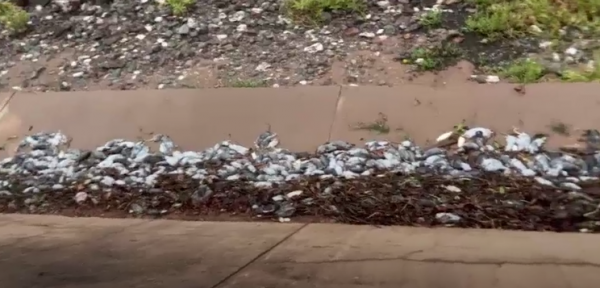An increase in rodents was reported several weeks ago — now locals say it is “getting out of control”.
“They get on the move in mass numbers … A week ago the river was just alive with rats floating around,” said a local Karumba resident, Yvonne Tunney.
“Everybody’s working furiously with baits and traps to get them under control.”
Many residents have complained about the “intense” smell.
Major of Carpentaria Shire Council, Jack Bawden, agreed that it was “not a very pretty sight”.
“They’ve been in Richmond and… they probably started turning up last week in numbers. And this week the numbers are getting thicker,” he said.
“They just float… up and down in the tide until eventually they disintegrate.”
Bawden said there was not much he could do and it was just a “quirk of nature”.
It is believed that the council have been setting traps in wheelie bins.

“They call it the plague rat because they periodically undergo very big increases in abundance”, he said.
“They’ve got very high reproductive rates… so when big rain falls in arid environments, which is their natural habitat, they increase.”
According to Banks, the number of rats currently seen in Queensland’s Gulf Country only happens once in a decade.
“What we’re seeing now is the natural result of too many rats — not enough food, not enough space — in the wrong place.”
Recently, a sea of dead rats was seen washed up on the beach in Karumba.
Experts say that rats will jump in water to cross more area when they are desperate for food.
Professor Banks said that seeing a lot of dead rats was a sign that the population would crash soon.






